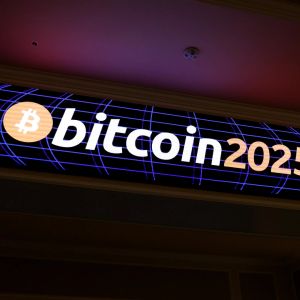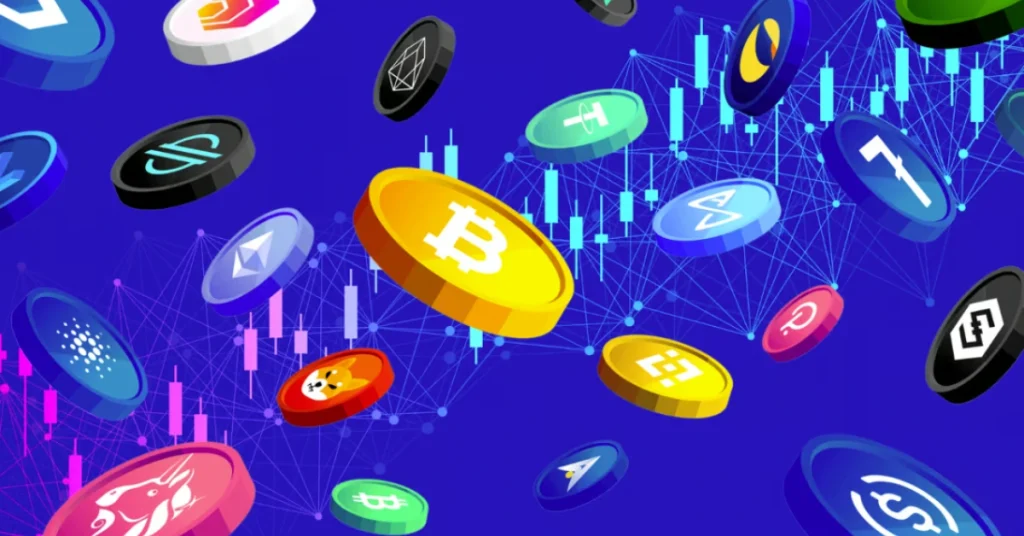BitcoinWorld JPMorgan Report: Ethereum Network Activity Lags Post-Pectra Upgrade A recent analysis from financial giant JPMorgan has cast a critical eye on the state of the Ethereum network following what the report identifies as the rollout of the Pectra Upgrade . While the market capitalization of Ethereum (ETH) has seen an uptick, the bank’s findings suggest this hasn’t translated into a meaningful boost in core network usage or significant inflows into potential spot ETH ETF products. What Did JPMorgan’s Analysis Reveal About Ethereum? According to details reported by The Block, the core of JPMorgan ‘s assessment revolves around a perceived disconnect between market valuation and on-chain activity. Here’s a breakdown of their key observations: Market Cap vs. Activity: The report acknowledges an increase in Ethereum ‘s market cap, suggesting positive market sentiment or anticipation. However, it notes a lack of corresponding significant growth in fundamental network activity metrics. CME Futures vs. Spot ETFs: A noticeable increase in long positions within the CME ETH futures market was highlighted. This contrasts sharply with the absence of significant inflows into spot ETH ETF s, which are still awaiting approval or broader availability in many key markets. Individual Investor Interest: The divergence between institutional-leaning futures activity and the lack of spot ETF inflows (often seen as a proxy for broader retail/individual interest) led analysts to conclude that individual investor enthusiasm for Ethereum currently remains subdued. This analysis provides a snapshot of how a major financial institution views the current dynamics within the Ethereum ecosystem, focusing on tangible market and on-chain data rather than just price movements. Understanding Ethereum Network Activity and the Pectra Upgrade When analysts like those at JPMorgan talk about Ethereum Network Activity , they are referring to a range of on-chain metrics that indicate how much the network is actually being used. These can include: Transaction Count: The number of successful transactions processed on the network. Active Addresses: The daily or monthly count of unique wallet addresses sending or receiving ETH or interacting with smart contracts. Gas Usage: The total amount of ‘gas’ (the unit of computation on Ethereum) consumed by transactions, reflecting the complexity and volume of operations like DeFi interactions or NFT transfers. Smart Contract Interactions: The number of times users interact with decentralized applications (dApps), decentralized finance (DeFi) protocols, or NFT platforms built on Ethereum. A major network upgrade, such as the Pectra Upgrade (referencing the proposed Prague/Electra combination or potentially a recent one like Dencun, depending on the report’s specific timing and terminology), is typically expected to improve the network’s efficiency, scalability, or functionality. These improvements are often anticipated to lead to increased usage, lower costs, and thus, a boost in Ethereum Network Activity . JPMorgan’s report highlights that, in their view, this expected activity surge hasn’t materialized despite the upgrade’s rollout. The Puzzle: Why Low Spot ETH ETF Inflows Despite Futures Interest? The distinction made by JPMorgan between CME ETH futures and spot ETH ETF s is significant. CME futures are primarily utilized by institutional traders and sophisticated investors for hedging or speculating on price movements without holding the underlying asset. Spot ETH ETF s, on the other hand, would hold actual ETH and are often seen as a more accessible investment vehicle for retail investors and traditional financial advisors, offering exposure to the asset class through regulated brokerage accounts. The observed increase in CME futures activity suggests continued institutional interest in having exposure to Ethereum ‘s price. However, the lack of substantial inflows into available or anticipated spot ETH ETF products points to potential hurdles for broader adoption. These hurdles could include regulatory uncertainty (especially in jurisdictions where spot ETH ETFs are not yet approved), lingering caution among traditional investors regarding direct crypto exposure, or simply a lack of strong conviction among individual investors at the current price levels. This divergence supports JPMorgan ‘s conclusion that while institutional players might be engaging with ETH derivatives, the enthusiasm from the wider individual investor base, often targeted by spot ETFs, appears muted. Implications for the Ethereum Network and Investor Sentiment What does JPMorgan ‘s analysis suggest about the current state of the Ethereum Network Activity and investor sentiment? It implies that: Upgrades Alone May Not Drive Adoption: While technical improvements from the Pectra Upgrade are valuable, they might not be sufficient on their own to immediately translate into significantly increased user activity or attract widespread new investment via easily accessible products like spot ETFs. Retail Adoption Remains a Challenge: The path to bringing millions of new individual users and investors onto the Ethereum Network or into ETH investment vehicles still faces considerable obstacles, whether they are related to complexity, perceived risk, or lack of accessible investment products. Institutional vs. Retail Divergence: There appears to be a notable difference in how institutional and retail investors are currently engaging with Ethereum , with institutions seemingly more comfortable with derivatives like futures than individuals are with potential spot investment products. This perspective from a major financial institution serves as a reminder that despite positive developments like network upgrades and increasing market cap, the growth and adoption of the Ethereum Network are complex processes influenced by technology, market structure, regulation, and investor psychology. Looking Ahead: What to Watch For Given JPMorgan ‘s assessment, what should market participants and Ethereum enthusiasts monitor in the coming months? Key indicators will include: Ethereum Network Activity Metrics: Keep an eye on transaction counts, active addresses, and gas usage. A sustained upward trend in these metrics would contradict the report’s findings and signal organic growth. Spot ETH ETF Developments: Regulatory decisions and the actual performance and inflows of spot ETH ETF s in jurisdictions where they are approved will be crucial gauges of individual investor demand. Broader Market Sentiment: The overall health and direction of the crypto market significantly influence activity and investment in individual assets like Ethereum . Impact of Future Upgrades: While the report focused on the period after the referenced upgrade, the long-term effects of Pectra Upgrade features (or subsequent developments) on network usability and cost could still drive activity over time. While JPMorgan ‘s report offers a cautious view, it provides valuable data points for understanding the current landscape. The lack of immediate widespread individual investor enthusiasm via spot ETFs and network activity doesn’t negate Ethereum’s long-term potential but highlights the challenges in translating technical advancements and institutional interest into broad-based adoption. Summary: JPMorgan’s Sobering Take on Ethereum Post-Upgrade In conclusion, JPMorgan ‘s recent report presents a somewhat sobering perspective on Ethereum ‘s performance following the cited Pectra Upgrade . Despite an increase in market valuation and institutional engagement via futures, the bank found little evidence of a significant surge in fundamental Ethereum Network Activity or strong individual investor demand as reflected in spot ETH ETF inflows. This analysis underscores the ongoing journey for Ethereum to translate its technical prowess and market presence into widespread, tangible usage and broad retail investment. To learn more about the latest Ethereum trends, explore our article on key developments shaping Ethereum price action. This post JPMorgan Report: Ethereum Network Activity Lags Post-Pectra Upgrade first appeared on BitcoinWorld and is written by Editorial Team

















